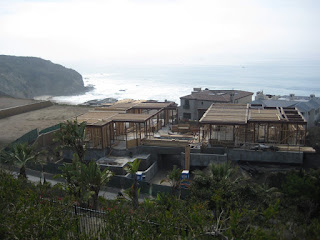Charlotte
has mastered the art of fashioning her own hijab. I’m not sure where my
youngest granddaughter learned to tie that Muslim headwear or why she chose the
hijab over the Al-Amira, the Shayla or the four other kinds of Muslim veils. She’s
only worn it around the house a couple of times and as the weather warms up
she’ll probably toss it aside along with her snow hat and mittens.
Not
long ago, Charlotte declared to her parents that she wants to be half Muslim.
Now mathematically that might be a challenge since Charlotte already considers
herself half-Jewish and half-Catholic. No matter. Even at five-years-old,
Charlotte seems determined to stake her claim on the religion of the moment
despite what those pesky adults in her life keep telling her about waiting
until she is an adult herself.
I
think this fascination with other religions began when Charlotte started a
preschool program at the Jewish Community Center in St. Paul. During classes on
alternate days of the week Charlotte was exposed to many of the Jewish
traditions. She loved the classes and her teachers.
Central
to Judaism is an engagement with stories and ideas and even to argue about
them. Arguments are encouraged because that’s how one learns what is important
to other people and why. Our L.A. friends here in the desert have a saying: Two
Jews, three opinions. Now that sounds like it would fit Charlotte’s personality
to a T. The same can be said of all my grandchildren. *
Recently
Charlotte marched in the Purim which is a Jewish holiday that commemorates the
savings of the Jewish people in Persia from extermination. She can now proudly
recite several prayers in Hebrew and even knows several songs in that language.
Then
on alternate days of the week Charlotte attends a preschool program at Holy Spirit
Catholic grade school. There she is introduced to Catholic tradition and song
which she has taken to with equal enthusiasm. So this winter, without a lot of
fanfare, Charlotte declared to anyone who was willing to listen that she is now
half-Jewish and half-Catholic.
Works
for me.
This
sudden interest in Muslim headgear seemed to come out of nowhere but like all
of my grandchildren Charlotte’s antenna is always scanning the air,
subconsciously searching for life’s little surprises and mysteries. It might
have been something she heard on television (although unlikely since Charlotte
and her brother get very little screen time). It might have been pieces of a
hundred thousand conversations her parents have had in the front seat driving
someplace. Or it might simply have come from a visit to her brother’s school
which has many Muslim students. Living in an urban environment, Charlotte is
exposed daily to the hijab, the yarmulke and dozens of other accouterments of
ethnic cultures.
Charlotte
seems to be picking religions the way other people pick their favorite
television shows. Over time it will probably ebb and slow and perhaps disappear.
Or she may find some philosophy that finds a home in her
ever-expanding and inquiring mind.
A
recent report from the Pew Research Center’s Forum on Religion and Public Life
found that twenty (20%) percent of Americans now check ‘none’ when asked about
their religious affiliation. Back in 1956 a government survey found that only
three (3%) percent of Americans checked that ‘none’ box. Now they’re a fifth of
all Americans.
In
time Charlotte can decide how she wants to embrace her faith and her beliefs.
Knowing all of my grandchildren as I do that will be a decision they make on
their own despite any influences they might feel from parents or grandparents.
During the normal course of growing up they’ll be exposed to options and
opportunities to find a belief system that works for them.
English
sociologist David Martin has been quoted as saying that ‘a belief in God tends
to correlate strongly with belief in the objectivity of moral values.’ Again,
that works for me.
My
wish for my grandchildren is not necessarily an affinity with a specific
religion but rather membership in the greater ecumenical community at large. A
community of values and charity and sharing and kindness and a spiritual element
of their own choosing. I want them to share those values in a world they will
soon impact with their lives and life style. The religious moniker they chose
is their own business when they’re ready to make that determination.
I
simply want them to be good people and contributing citizens of the world.
*Some
comments lifted from those made by Rebecca Kanner on the Minnpost web site.
















































